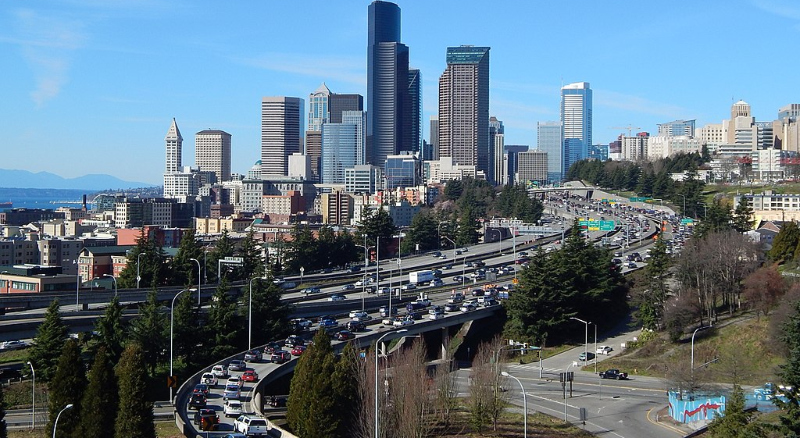

You may have noticed that the deserted streets are starting to fill up again. For better or worse, Americans are getting back on the road, returning to places they had avoided since March. Big Data gives us some hints about how fast people are returning to their old haunts.
Google tracks movements of people through the locations of cell phones on which users have activated the “location history” feature. Locations are tracked for several groups of places, and these locations are reported daily on a countywide basis, with about a two-week time lag. The baseline against which the location visits are measured is the five‑week period January 3 to February 6, 2020.
It is not clear how representative the sample is of the general population (does a random group of people activate the location history feature?). But since the same people are tracked, for the most part, the data provide useful trends.
One difficulty with daily location data is that it varies widely through the week. People do different things on different days, and weekends are really different: a line graph of the raw data looks like a saw blade. To account for this, we graph the data in a rolling seven-day average, so each data point averages an entire week’s movements.
Figures 1,2 and 3 show location trends for five categories that Google publishes for King, Pierce and Snohomish Counties, with the lines reset to March 1. (We have eliminated the “parks” category since it is highly erratic and not useful).



The patterns are similar across the three counties. All show a jump in visits to the grocery category in late March, as households began to stock up on essentials. Those visits then plummeted as stay-at-home orders took hold and people made fewer trips to stores and began to order online. As would be expected, trips to work, retail and transit facilities dropped rapidly in March and hit their low point in early April. We see an upward blip in early May that does not have an obvious source (Mother’s Day?), and a downward blip in workplace visits over the Memorial Day weekend.
All kinds of trips have increased since the low points of late March and early April. As people have returned to work, transit use has increased. At the same time, the residential line has fallen by more than half, as people gradually emerge from their self-isolation.
Stay-at-home and isolation orders differed around the country, and we can check the trends in various states. Figure 4 shows the movements for the country and six western states in the volatile retail and recreation category.

Here we see that Washington was a bit ahead of the other states in the early part of the pandemic, which is understandable since U.S. cases were first identified here. But then all the states dropped their movements to retail and recreation locations at about the same pace in mid-March. By the second week of April, all the states were clustered fairly closely. Then all states start to crawl out of the low points, but at somewhat different paces. Arizona was the least restrictive and California became the most restrictive.
Looking Ahead Physical movements of people, and the gradual return to workplaces and retail, track closely with patterns of spending highlighted by the Indexer. As the Puget Sound region gradually opens, due to both easing of government restrictions and changing consumer behavior, we will see movements get closer to the January baseline. The habits developed over the past few months—work at home, shop online, minimize trips to stores—will likely persist for some time, so movements will struggle to return all the way to their previous levels.
This article is reprinted with permission from Puget Sound Indexer, a site devoted to analysis of data in the region.
Discover more from Post Alley
Subscribe to get the latest posts sent to your email.
